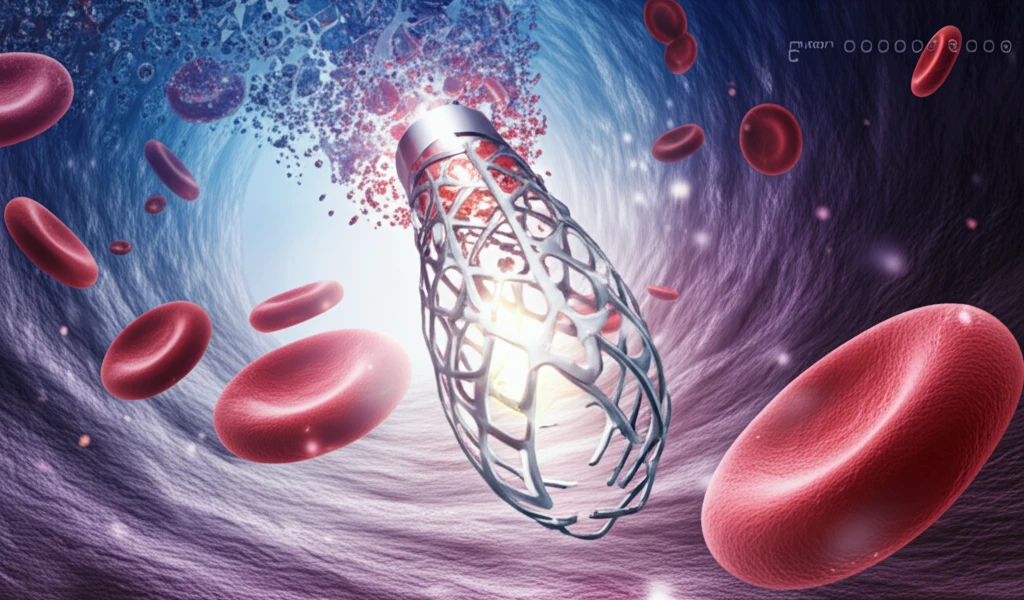
Heart Health Revolution: Are Bioresorbable Stents the Future of Angioplasty?
"Uncover the latest advancements in bioresorbable stent technology and how they're transforming the treatment of coronary artery disease, offering new hope for long-term heart health."
Coronary artery disease (CAD) remains a leading cause of morbidity and mortality worldwide. Angioplasty, a procedure to widen narrowed or blocked arteries, has become a standard treatment, often involving the placement of stents to keep the arteries open. Traditional metal stents, while effective, can sometimes lead to long-term complications such as late stent thrombosis and neoatherosclerosis, prompting the development of bioresorbable stents as an innovative alternative.
Bioresorbable stents, also known as bioabsorbable scaffolds, represent a paradigm shift in interventional cardiology. These devices are designed to provide temporary support to the artery, gradually dissolving over time as the artery heals. The idea is that once the artery has regained its natural ability to stay open, the scaffold is no longer needed and disappears, leaving no permanent implant behind.
Recent studies and clinical trials have focused on evaluating the safety and efficacy of various bioresorbable scaffolds, including those made from magnesium alloys and poly-L-lactic acid (PLLA). Researchers are keenly interested in whether these new scaffolds can reduce the risk of long-term complications compared to traditional drug-eluting stents (DES).
The Promise of Bioresorbable Stents: Key Research Findings

Several abstracts presented at recent cardiology conferences shed light on the performance of bioresorbable stents in real-world settings and complex lesions. One notable study is a registry designed to evaluate the clinical performance and long-term safety of the Resorbable Magnesium Scaffold (Magmaris) in up to 1065 subjects across multiple sites in Europe and Asia-Pacific. Preliminary data from the first 400 subjects showed a low rate of target lesion failure (TLF) at 6 months, indicating a promising safety profile.
- Low rates of target lesion failure (TLF) at 6-month follow-up.
- A low rate of definite/probable scaffold thrombosis.
- Insights into specific adverse events such as scaffold recoil and intraluminal scaffold dismantling.
- Comparable MACE (major adverse cardiac events) rates with new-generation DES.
Looking Ahead: The Future of Bioresorbable Stents
Bioresorbable stents represent a significant advancement in the treatment of coronary artery disease. While long-term data is still being collected, the initial results are promising, suggesting that these devices could potentially reduce the risk of late complications associated with traditional metal stents. As technology evolves and more clinical evidence becomes available, bioresorbable stents may become an increasingly important tool in the fight against heart disease, improving outcomes and quality of life for patients around the world.
